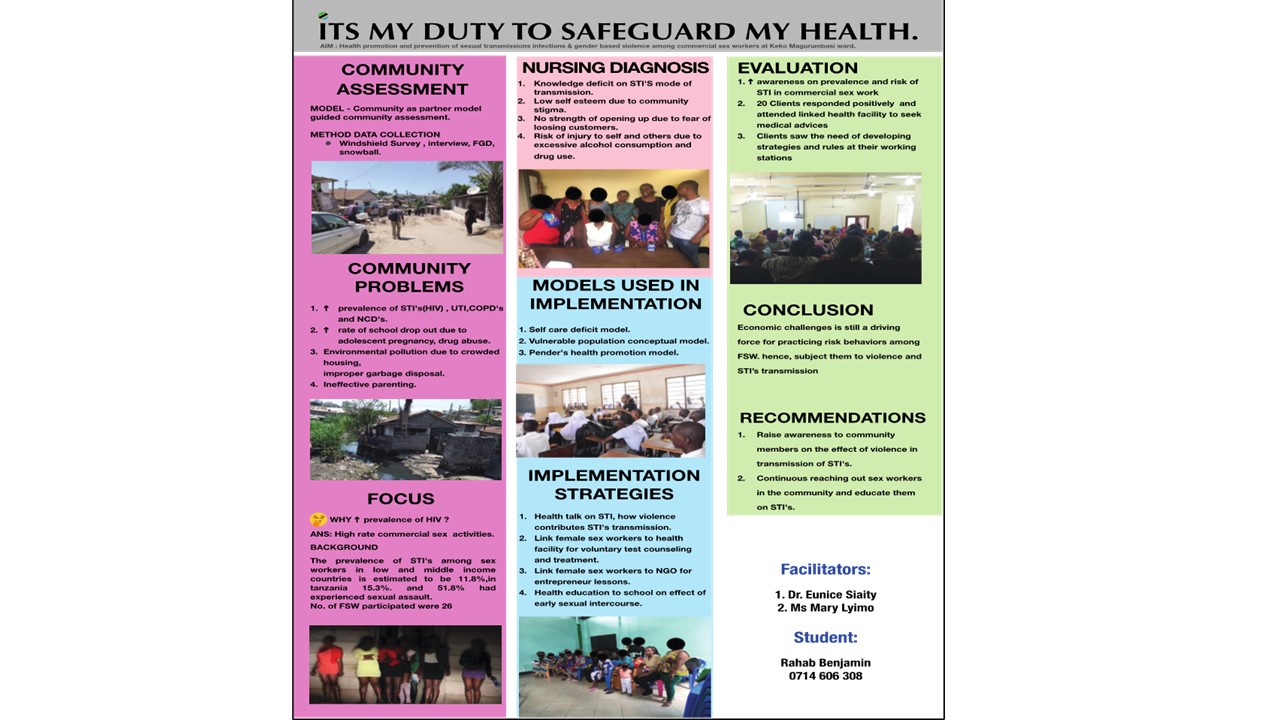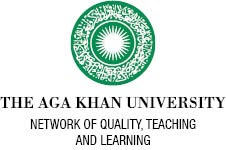Maximizing Students’ Engagement and Critical Reflection in Promoting Community Health
Eunice Siaity Pallangyo
Associate Professor and Academic Head-SONAM Tanzania
Associate Fellow in AdvanceHE
Inaugural Member-Teachers Academy-AKU
Ph.D. in Medical Sciences (Maternal and Child Health), MScN (Women’s Health), BScN, RN
Introduction
My aspiration lies in improving patient care and community health through teaching, research, and advocacy. Apart from academic leadership, I champion teaching and learning strategies, which would transform nurses and midwives to sustainably lead change and improve quality of life. I strongly believe that most problems in low-resourced settings are well known. Unfortunately, the translation of this knowledge into practice is inadequate. In my opinion, the strategies commonly utilized for educational preparation in our context contribute to this gap. Despite this, several teaching and learning theories and approaches’ potential for mitigating the afore-mentioned gap are widely discussed in the literature. However, nurses and midwives are not yet well equipped to work independently in addressing complex and dynamic health problems.
My Teaching Approach
My favorite approach is the use of problem-based techniques and active engagement of students in learning (1, 2). I usually encourage a critical reflection on individual experiences and group discussions, which allows for knowledge exchange in both directions in a participatory manner. At the beginning of my career as a teacher, I struggled to apply teaching and learning strategies that embrace a two-way exchange of knowledge so as to bridge the gap which usually exists between the teacher and the taught. Why the struggle? First, in my initial educational training, the banking model (teacher-led model) dominated, hence without a self-assessment, I continued to teach the way I was taught. Secondly, my students too had been taught in the same way that I was. Diverting them from “receiving” to “active learning” required effort in re-thinking about teaching and learning pedagogies and most importantly, being able to reflect critically on our experiences.
To ensure active engagement of students and a critical analysis of real-life issues based on their experiences, I have consistently strived to develop, review and implement courses using contextually relevant pedagogies such as small group work and individual involvement. My own reflections on teaching practices have counted as one of the quality assurance and personal growth in facilitating students’ learning. I use Brookfield’s Four Lenses Framework (3) to guide my personal reflection and integration of opinions obtained from colleagues and students in teaching and learning practices. This lead to students’ and my own continuous improvement and growth. Furthermore, the use of literature and engagement with other scholars and professional development has made me more conscious about paying attention to issues of diversity, unconscious biases, and students’ inclusion in teaching and learning processes. I have also reflected on my teaching practice through the lenses of my life as a student and a teacher. This reflection opened new opportunities for me to learn to teach effectively. For instance, my experience of seeing and doing followed by connecting these to known experiences in life helped me learn better. Similarly, as a facilitator, I balance the interaction during group/class discussions and peer interactions in my classroom and make teaching participatory which allows for more student engagement.
Facilitation of Community Health Nursing Course through active engagement and reflections
My facilitation of the Community Health Nursing course involved building on students’ prior experiences and pre-understanding of community health problems so as to identify measures for promotion and prevention of health problems. This entails asking students to:
1. Reflect on their own experience of health issues as members of the community they live in and as healthcare professionals
2. Identify key concerns affecting the community’s health based on their experience
3. Design a small and simple intervention demonstrating how this would result in a sustainable impact
In addition, students are required to seek the necessary permission to access communities and interact with local authorities. In the end, they are required to develop and conduct a poster presentation about their intervention. This approach also entails lots of questioning and brainstorming among students themselves and with me too, usually in groups both virtually and in person.
Students’ Learning
As a result of using the aforementioned strategy, I have observed that it fosters students’ curiosity, enhances their reasoning capabilities and problem-solving skills, which are important attributes in addressing deficiencies in practice, leading change, and improving patient care.
In addition, students develop multiple skills such as using graphics (preparing posters), presentation skills, and time management. One student said of the course: “The Zoom and self-directed approach used was very difficult but it made me learn many new things especially about preparing the picture presentation using pallet”.
Further, the students engaged in several small projects which were artistically designed such as: “Commercial sex workers within community settings: Risks and mitigation” & “Timber work as a source of income and Chronic Obstructive Pulmonary Disease (COPD)”. Interestingly, students with related topics organized themselves and sought solutions jointly thereby illustrating their teamwork and collaboration. The poster below presents one such project.

Conclusion
The students’ achievement of learning outcomes and their enhanced knowledge base is the testament that I was able to apply my teaching philosophy in practice. Although all the disease problems identified were well known to students, the reflections and acting on the alleviation of these problems stimulated new learning and insight. The experience allowed them to gain multiple skills, encouraged enthusiasm and excitement, which was demonstrated by students. I believe that students are prepared to apply knowledge and skills to lead change after graduation in their context.
References
1. Bucklin, B.A., Asdigian, N.L., Hawkins, J.L., & Klein, U. (2021). Making it stick: use of active learning strategies in continuing medical education. BMC medical education, 21(1):1-9.
2. Nguyen, K.A., Borrego', M., Finelli, C.J., DeMonbrun, M., Crockett, C., & Tharayil S. (2021). Instructor strategies to aid the implementation of active learning: a systematic literature review. International Journal of STEM Education, 8(1):1-18.
3. Brookfield, S. (1998). Critically Reflective Practice. The Journal of Continuing Education in the Health Professions, 18(1), 197–205. https://www.kent.ac.uk/teaching/documents/academic-practice/New%20to%20teaching%20Staff/Brookfield%20models%20of%20reflective%20practice.pdf


